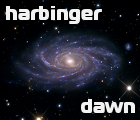|
Spaceflight Physics Concept
|
|
| SpaceEngineer | Date: Sunday, 08.01.2012, 23:36 | Message # 16 |
 Author of Space Engine
Group: Administrators
 Russian Federation
Russian Federation
Messages: 4800
Status: Offline
| Quote (Hardts) You could simply use "C" (lightspeed), and a multiplier - For instance: C-0.2, C-0.5, C-2.5 and so on. That could simplify things. And if you need to use it in some context, you could call it the c-factor
No, normal speed for interstellar travel is billions of times faster than light. "I travel at 2,236,000,000 c" - lol. Logarithmic scale is more convenient: Log(2,236,000,000) = 9.349, "I travel at 9.349 logs". But speed will be inconstant, so this factor will change every time. Time acceleration factor may be constant during the main part of travel.
*

|
| |
| |
| Hardts | Date: Wednesday, 11.01.2012, 01:39 | Message # 17 |
 Space Pilot
Group: Users
 Denmark
Denmark
Messages: 112
Status: Offline
| Quote (SpaceEngineer) No, normal speed for interstellar travel is billions of times faster than light
Yes, you may be on to something there :D.
Before the suggestion is completely layed to rest though, you could say "I'm travelling at 2,5Kc/Bc/Mc/Bc/Tc" etc. (as in 2,5Kilo(thousand)/Million/Billion/Trillion x c)
i5 2500k 3,3 GHz @3,6GHz
8 GB 1600 MHz DDR3
3HDD (1TB+500GB+320GB)
Gainward Gtx 460 1GB
2 monitors: Samsung 27" P2770, 22" Samsung BW226
+A sh*tload of palmtree's around my computer :)
|
| |
| |
| curiousepic | Date: Wednesday, 11.01.2012, 01:44 | Message # 18 |
 Space Pilot
Group: SE team
 United States
United States
Messages: 141
Status: Offline
| Quote (Hardts) "I'm travelling at 2,5Kc/Bc/Mc/Bc/Tc" etc.
Not bad, i kind of like that.
My ideal preferences for visual design of the mothership and technology in SE
Harry Potter and the Methods of Rationality
|
| |
| |
| syndrome | Date: Wednesday, 11.01.2012, 17:03 | Message # 19 |
|
Observer
Group: Newbies
 Serbia
Serbia
Messages: 5
Status: Offline
| Quote (Hardts) "I'm travelling at 2,5Kc/Bc/Mc/Bc/Tc" etc. (as in 2,5Kilo(thousand)/Million/Billion/Trillion x c)
Then it's supposed to be 2,5Kc/Mc/Gc/Tc/Pc (as in kilo <thousand> / mega <million> / giga <billion> / tera <trillion> / peta <quadrillion>) ...
While we're at it, I'd also like to recommend the standard SI prefix system for distances in kilometers.
Parsecs are cool, AUs are cool, but when it comes to distances in km, it's a long line of smeared digits without any purpose other than to clutter the interface. Why not use terameters, gigameters, and megameters?
|
| |
| |
| SpaceEngineer | Date: Wednesday, 11.01.2012, 20:05 | Message # 20 |
 Author of Space Engine
Group: Administrators
 Russian Federation
Russian Federation
Messages: 4800
Status: Offline
| Quote (syndrome) Why not use terameters, gigameters, and megameters?
One terameter is just 1012 m = 6.666 AU. One light year is 9.46 petameters. One megaparsec (average intergalactic distance) is 30.8 zettameters. I think using this is a bad idea - not everybody knows about SI prefixes, and measuring space distances in meters is strange. Why not in Plank units then? Plank units system is most physically-based system. Imagine what if we measure all casual quantities in this system:
60 km/h = 5.555e-5 c = 55.5 micro-c
1 kilogram = 4.6e+7 Plank-mass-units = 4.6 mega-Plank-mass-units
10 km = 6.188e+38 Plank-distance-units (LOL what is SI prefix for this?)
1 minute = 1.11e+45 Plank-time-units (LOL...)
This is useless...
*

|
| |
| |
| architeuthis | Date: Friday, 01.06.2012, 06:38 | Message # 21 |
 Space Tourist
Group: Users
 United States
United States
Messages: 21
Status: Offline
| I have a soft-spot for single stage to orbit spaceplanes. It will be neat to fly them in planetary atmospheres. I assume that they will have high enough performance that it doesn't take 2-3 hours to fly to the desired orbit from the surface?
I think that its a good idea for a starship's momentum to be conserved through hyperspace travel. The need to match hubble velocity should add lots of depth to the space exploration simulation. I suppose you would have to observe doppler shifts of stars to calculate matching velocities. I wonder if that's something that will be done by a flight computer? I am curious however, I thought I read that time travel is ruled out by the game physics, and I wonder if people are referring simply to relativistic effects? That makes sense if it is almost impossible to accelerate to relativistic velocities in the game, however a second problem arises from simultaneity of events in different reference frames. Since FTL travel is allowed obviously, it seems to also implicitly allow time travel paradoxes by extension.
This project is so ambitious I can't wait to see what happens next!
Edited by architeuthis - Friday, 01.06.2012, 06:39 |
| |
| |
| Vinny | Date: Monday, 27.08.2012, 02:35 | Message # 22 |
|
Explorer
Group: Users
 United States
United States
Messages: 172
Status: Offline
| Hi, guys!
How do I use the hyperdrive? When I tried to turn on the hyperdrive by hitting the I key it doesn't do anything and I think the I key have the other function or maybe I'm not using the right starship for hyperdrive. Please tell me what key to press to activate the hyperdrive and what kind of starship to select from the spaceships list to get the starship that have a hyperdrive. Thanks!
Cheers,
Vincent
|
| |
| |
| DoctorOfSpace | Date: Monday, 27.08.2012, 02:51 | Message # 23 |
 Galaxy Architect
Group: Global Moderators
 Pirate
Pirate
Messages: 3600
Status: Offline
| Quote (Vinny) How do I use the hyperdrive? When I tried to turn on the hyperdrive by hitting the I key it doesn't do anything and I think the I key have the other function or maybe I'm not using the right starship for hyperdrive. Please tell me what key to press to activate the hyperdrive and what kind of starship to select from the spaceships list to get the starship that have a hyperdrive. Thanks!
Default key is I, make sure you are in space ship flight mode and make sure you have enough velocity to get away from a planet otherwise you'll just accelerate yourself into it.
Intel Core i7-5820K 4.2GHz 6-Core Processor
G.Skill Ripjaws V Series 32GB (4 x 8GB) DDR4-2400 Memory
EVGA GTX 980 Ti SC 6GB
|
| |
| |
| HarbingerDawn | Date: Monday, 27.08.2012, 03:08 | Message # 24 |
 Cosmic Curator
Group: Administrators
 United States
United States
Messages: 8717
Status: Offline
| Vinny, once hyperdrive is active you also need to use the mousewheel to change the hyperdrive factor.
All forum users, please read this!
My SE mods and addons
Phenom II X6 1090T 3.2 GHz, 16 GB DDR3 RAM, GTX 970 3584 MB VRAM
|
| |
| |
| Vinny | Date: Monday, 27.08.2012, 03:16 | Message # 25 |
|
Explorer
Group: Users
 United States
United States
Messages: 172
Status: Offline
| Hi, guys!
Got it! Thanks guys!
Cheers,
Vincent
|
| |
| |
| NavigatorOfSkyes | Date: Thursday, 25.07.2013, 11:23 | Message # 26 |
 Observer
Group: Newbies
 France
France
Messages: 3
Status: Offline
| Hello! I like a lot the concept of superluminal acceleration (as opposed to the jumps) resembling the current "Go To" effect (which is wonderful).
As for the acceleration factor (superluminal factor ?) maybe it could be expressed as % C like this:
10% C
100% C
and then in exponentials:
200 x 10e 2 C
500 x 10 e 5 C
....
just my two cents 
|
| |
| |
| neutronium76 | Date: Thursday, 25.07.2013, 17:02 | Message # 27 |
 World Builder
Group: Users
 Greece
Greece
Messages: 718
Status: Offline
| Quote (SpaceEngineer) The first concept is easy to understand, but it still requires more of a "physical explanation". Suppose, for example, one took a flight from Earth to Mars. The ship or player calculates the transition orbit; the moment of engaging and disengaging of the main rocket engines. Once the ship reaches the engagement point, it accelerates to its preset travel speed using main engines. Then the ship flies by inertia and reaches Mars within several months. But instead of doing this, the ship turns the hyperaccelerator on. It seems like the time-flow is sped-up a few million times for the ship: it reaches Mars within a few seconds. When the ship reaches the breaking point close toMars, the hyperaccelerator is switched off, and the ship then disengages its main engines and enters Mars' orbit.
I have one question regarding this: If the ship does a transfer between 2 planets e.g. earth-->mars and we accelerate only ship time, for the coast part of the trip, wouldn't the ship arrive at the target planet's orbit much much prior to the planet itself (depending on the acceleration factor)? 
PC1:Core i7 970@3.34GHz, 6 cores/12 threads, 12GB DDR3 RAM@1.34GHz, 2x(SLI) GTX-580 GPUs 3GB VRAM(GDDR5)@1GHz, OS:Win7x64SP1
PC2:Core2Quad X9770@3.2GHz, 2 cores/4 threads 4GB DDR2 RAM@1GHz, GTX-285 GPU 1GB VRAM(DDR3)@1.24GHz, OS:WinVistax64SP2
|
| |
| |
| SpaceEngineer | Date: Thursday, 25.07.2013, 21:19 | Message # 28 |
 Author of Space Engine
Group: Administrators
 Russian Federation
Russian Federation
Messages: 4800
Status: Offline
| Quote (neutronium76) I have one question regarding this: If the ship does a transfer between 2 planets e.g. earth-->mars and we accelerate only ship time, for the coast part of the trip, wouldn't the ship arrive at the target planet's orbit much much prior to the planet itself (depending on the acceleration factor)?
Yes, but computer will take this into account, and change calculated transition orbit.

|
| |
| |
| Darkcloak | Date: Friday, 13.12.2013, 21:46 | Message # 29 |
|
Astronaut
Group: Users
 United States
United States
Messages: 73
Status: Offline
| Quote SpaceEngineer (  ) Yes, but computer will take this into account, and change calculated transition orbit.
I'm late to this thread, though I have peered in on it a few times. But, wouldn't... admitting now that I'm about 3/4 clueless as to time distortion and whatnot... wouldn't that mean that the ship/crew would... *reads again* Nope, nope, I get it. That's something to think about, though. That'd be a very complex navigation computer. Would it also calculate for objects that might be in the way during the journey? Well, saying, a long journey than from Earth to Mars.
|
| |
| |
| neutronium76 | Date: Tuesday, 11.02.2014, 09:15 | Message # 30 |
 World Builder
Group: Users
 Greece
Greece
Messages: 718
Status: Offline
| Sorry if this has been posted before, or if this is not the correct topic thread:
In latest version (0.9.7.1) I have noticed an improvement in orbital physics. However there is some issue with the display of orbital parameters in the upper right corner and with the orbit trajectory line when orbiting a moon of a planet (e.g a moon of a gas giant): both the displayed orbital parameters and the orbit trajectory line are incorrect. Nevertheless the orbit itself is more or less correct(as shown by the velocity vector, v,v1,v2). I understand that this is probably too much for the engine to compute at the current stage of SE development and that it will be fixed in future version so Space Engineer should not bother with it too much now  . .
PS: I think that this does not affect the orbit of a spacecraft orbiting earth's moon and maybe orbit's of catalog planets/moons 
PC1:Core i7 970@3.34GHz, 6 cores/12 threads, 12GB DDR3 RAM@1.34GHz, 2x(SLI) GTX-580 GPUs 3GB VRAM(GDDR5)@1GHz, OS:Win7x64SP1
PC2:Core2Quad X9770@3.2GHz, 2 cores/4 threads 4GB DDR2 RAM@1GHz, GTX-285 GPU 1GB VRAM(DDR3)@1.24GHz, OS:WinVistax64SP2
Edited by neutronium76 - Tuesday, 11.02.2014, 09:52 |
| |
| |